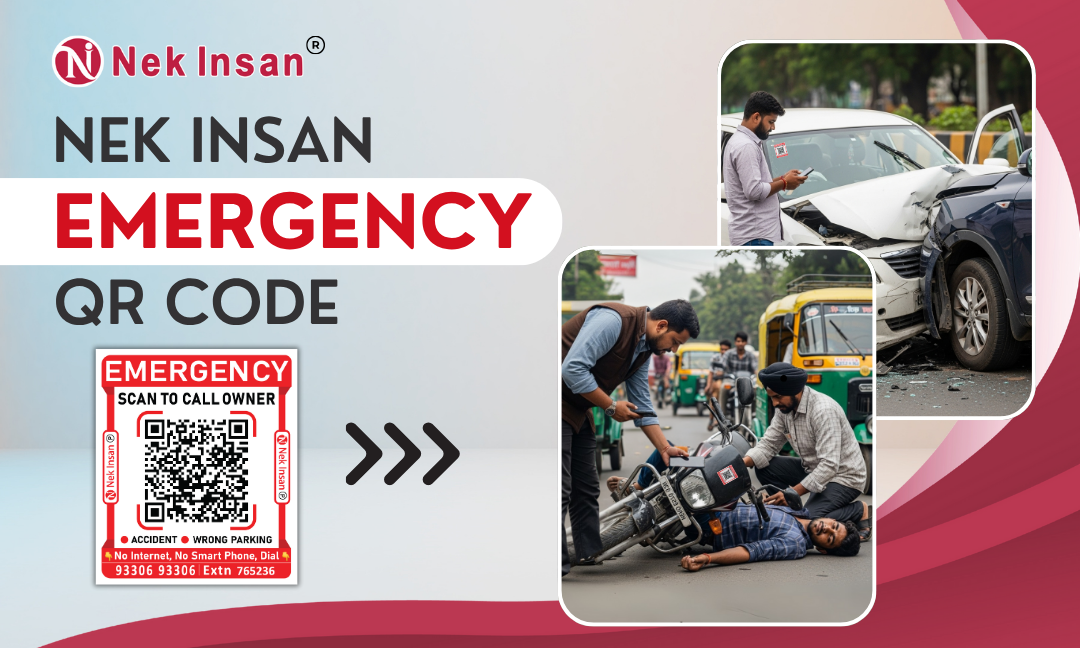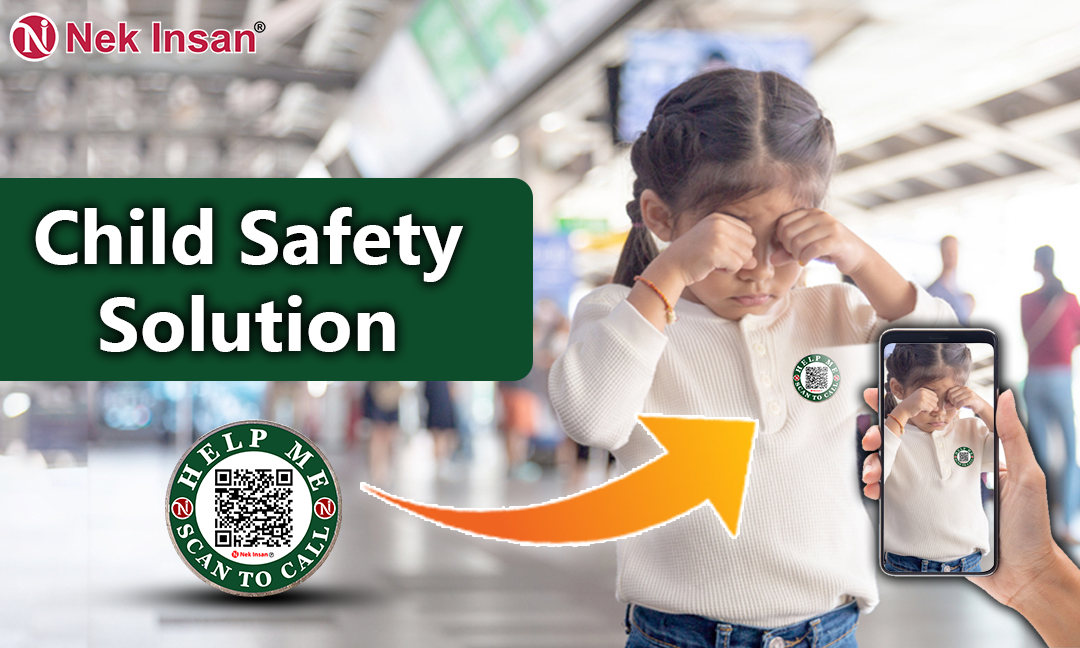Child Safety Solution by NekInsan
Views: 111 | Updated: 1 month, 3 weeks ago
Child safety encompasses a wide range of measures and practices aimed at protecting children from harm, injury, abuse, and exploitation.
It involves creating safe environments, educating children and caregivers, implementing protective policies, and fostering open communication.
Here's a breakdown of key aspects of Child Safety:
I. Common Child Safety Concerns:
- Accidents and Injuries:
- Motor Vehicle Accidents: A leading cause of death for children and young adults. Proper use of car seats, booster seats, and seat belts is crucial. Teen driving safety is also a major concern.
- Falls: From changing tables, stairs, windows, or playgrounds.
- Drowning: In bathtubs, pools, or other bodies of water.
- Choking/Suffocation: From small objects, food, balloons, plastic bags, or unsafe sleep environments.
- Burns/Scalds: From hot liquids, appliances, or fire.
- Poisoning: From medicines, cleaning products, or lead.
- Firearms: Accidental shootings.
- Abuse and Exploitation:
- Child Sexual Abuse (CSA): A severe and often hidden threat, both offline and online.
- Child Labor: Exploitation of children in various forms of work.
- Child Marriage: Forcing children into marriage, particularly girls.
- Child Trafficking: The illegal movement or trade of children for exploitation.
- Neglect: Failure to provide for a child's basic needs.
- Online and Digital Dangers:
- Cyberbullying: Harassment and intimidation through digital channels.
- Online Predators: Individuals who seek to exploit children through online interactions.
- Inappropriate Content: Exposure to age-inappropriate or harmful material.
- Privacy Risks: Children unknowingly sharing personal information online.
- Misinformation/Disinformation: Exposure to false or misleading information.
- Mental and Emotional Well-being:
- Bullying: In-person or online harassment.
- Stress and Depression: Kids can experience significant stress, leading to mental health issues.
- Self-harm and Suicide: Tragic outcomes of untreated mental health problems.
- Other Concerns:
- Stranger Danger: The risk of abduction or harm from unknown individuals.
- Road Safety: Pedestrian and cyclist safety.
- School Violence: Attacks or threats within school premises.
- Unhealthy Eating: Leading to childhood obesity and related health issues.
II. Child Safety Guidelines for Parents and Caregivers:
- Home Safety (Childproofing):
- Outlets and Cords: Cover electrical outlets, keep cords out of reach.
- Cabinets and Drawers: Use childproof locks on cabinets containing medicines, cleaning supplies, sharp objects, and hazardous materials.
- Stairs: Install safety gates at the top and bottom of all stairways.
- Windows: Install window guards or stops, and avoid corded window coverings (or use tie-down/tension devices). Remove furniture from under windows.
- Furniture: Secure heavy furniture (TVs, dressers, bookshelves) to walls to prevent tipping.
- Water Safety: Never leave children unsupervised near water (bathtubs, pools). Keep toilet lids closed and use lid locks. Empty buckets when not in use.
- Fire Safety: Install smoke and carbon monoxide detectors, create and practice a fire escape plan, keep matches/lighters out of reach, and use fireguards around fireplaces/heaters.
- Choking Hazards: Keep small objects, toys with small parts, and certain foods (whole grapes, hot dogs, nuts, hard candy, popcorn) away from young children.
- Medicines: Store all medicines, including vitamins, in their original containers in a high, locked cupboard, out of reach and sight.
- Button Batteries: Be aware of devices that use button batteries (remotes, toys) and ensure battery compartments are secure. Ingested button batteries are extremely dangerous.
- Outdoor and Road Safety:
- Car Seats: Always use age and weight-appropriate car seats, booster seats, and seat belts correctly.
- Pedestrian Safety: Teach children to look both ways, use crosswalks, and follow traffic signals.
- Playground Safety: Supervise children, ensure playgrounds are well-maintained, and teach proper use of equipment.
- Bike Safety: Always ensure children wear helmets when cycling.
- Online Safety:
- Set Clear Rules: Establish guidelines for screen time, websites, and online communication.
- Supervision: Keep computers in common areas, monitor internet use, and check browser history.
- Privacy Settings: Teach children to keep personal information private and use strong privacy settings on apps and social media.
- Talk About Strangers: Warn children about online predators and the dangers of meeting online "friends" in person.
- Critical Thinking: Help children identify misinformation and age-inappropriate content.
- Parental Controls: Utilize parental control software to filter content and manage screen time.
- General Safety Education for Children:
- Personal Information: Teach children their full name, address, phone number, and how to contact parents or emergency services (e.g., 112 in India).
- Stranger Danger: Emphasize never going anywhere with a stranger or accepting anything from them without parental permission.
- Good Touch/Bad Touch: Educate children about appropriate and inappropriate touching and empower them to say "no" and report any uncomfortable situations.
- Getting Lost: Teach children to stay put if they get lost and to seek help from a uniformed official or a mother with children.
- Not Keeping Secrets: Encourage children to share everything with a trusted adult, especially if someone tells them to keep a secret that makes them feel uncomfortable.
- Bullying: Teach them to speak up, report bullying, and seek help from teachers or parents.
III. Child Safety in Schools:
- Physical Security: Secure entry points, surveillance cameras, visitor management systems.
- Emergency Preparedness: Regular drills for fire, earthquake, and lockdown situations. Clear emergency plans and assembly points.
- Transportation Safety: Strict guidelines for school buses and other school transport.
- Anti-Bullying Programs: Fostering a positive and inclusive school culture, with clear policies and reporting mechanisms for bullying.
- Staff Training: Training teachers and staff on child protection policies, first aid, and emergency response.
- Open Communication: Encouraging students to report any safety concerns to teachers or trusted adults.
- Cybersecurity Awareness: Educating students about online safety, cyberbullying, and responsible digital citizenship.
- Hygiene: Promoting handwashing and maintaining clean facilities to prevent illness.
Nekinsan offers a specific "Child Safety QR" product designed to help reunite lost children with their parents quickly and efficiently. This solution leverages QR code technology to bridge the gap between a child in distress and their caregivers.
Here's how Nekinsan's QR Code sticker for child safety generally works:
-
QR Code Badge/Sticker: Parents purchase Nekinsan's Child Safety QR badges or stickers. These are typically small, durable, and can be attached to a child's clothing (e.g., shirt with a pin), backpack, wristband, or other belongings.
-
Registration and Profile Setup: Parents register their child's details on the Nekinsan platform (via their app or website), linking the unique QR code to a secure online profile. This profile can contain crucial information such as:
- Child's name
- Emergency contact numbers (parents, guardians, other trusted adults)
- Medical information (allergies, conditions, medications)
- Any special needs or instructions
- A photo of the child for easy identification. Parents can update this information as needed.
-
Scanning by a Good Samaritan: If a child gets lost or needs help, any person with a smartphone can scan the Nekinsan QR code on the badge. This can be done using the Nekinsan app or any standard QR scanner (like Google Lens, Paytm, GPay, or the phone's built-in camera).
-
Instant Notification and Siren Alert: As soon as the QR code is scanned, an immediate alert, often accompanied by a siren sound, is sent to the registered contact numbers of the child's parents. This alert is designed to get their attention even if their phone screen is locked.
-
Photo/Video Capture and Location Sharing: Upon scanning, the scanner's phone camera typically activates, allowing them to take a photo or video of the child and their surroundings. This visual information, along with the exact date, time, and GPS location of the scan, is instantly transmitted to the parents. This provides crucial context for the parents about where their child was found.
-
Confidential Communication (Masked Calls): The Nekinsan system facilitates communication between the scanner and the parents using a masked or virtual phone number. This means the scanner's actual phone number is not revealed to the parents, and vice versa, protecting the privacy of both parties while enabling direct contact. Parents also receive a call-back option to initiate communication with the scanner.
-
Emergency Helpline Access: After the call, the scanner's phone may display emergency helpline numbers (police, ambulance, fire department) for them to contact if additional help is needed.
-
Data Privacy and Security: Nekinsan emphasizes 100% data privacy. Only the designated parents or guardians have access to the child's sensitive information. Call and scan logs are maintained for security and record-keeping.
Benefits for Child Safety:
- Rapid Reunification: The primary benefit is expediting the process of reuniting a lost child with their family by enabling instant communication and sharing of location and visual information.
- Reduced Panic: Parents receive immediate, concrete information about their child's whereabouts, which can significantly reduce panic during a stressful situation.
- Privacy Protection: Masks personal phone numbers, ensuring both the parents' and the good Samaritan's privacy.
- Comprehensive Information: Allows for the inclusion of critical medical and contact information that can be vital in an emergency.
- Ease of Use: Simple scanning process accessible to anyone with a smartphone.
- Empowers Bystanders: Gives ordinary citizens a tool to effectively help a lost child.
- Works in Various Scenarios: Useful in crowded places like malls, amusement parks, schools, or while traveling.
Nekinsan's Child Safety QR solution acts as a modern digital ID tag, enhancing traditional methods by providing real-time communication and information exchange, which can be invaluable in safeguarding children.


